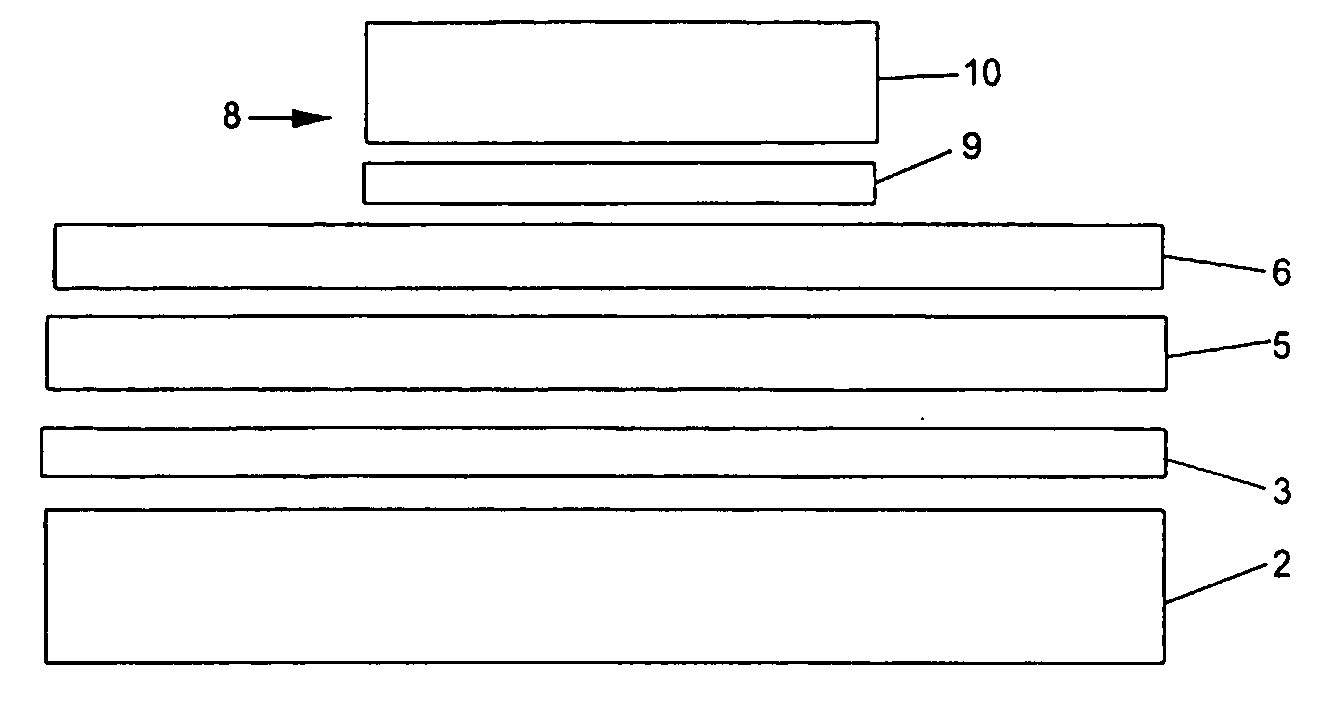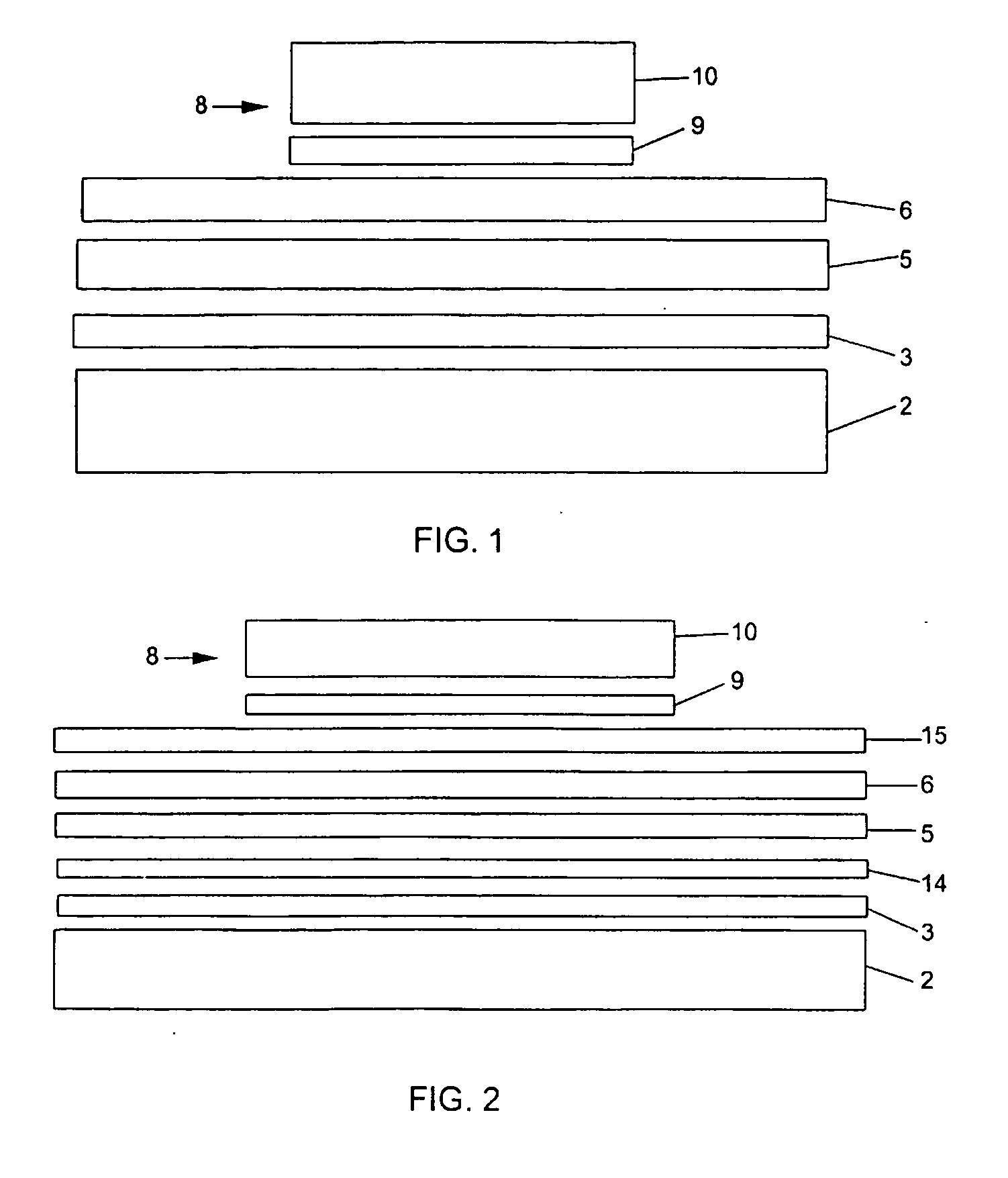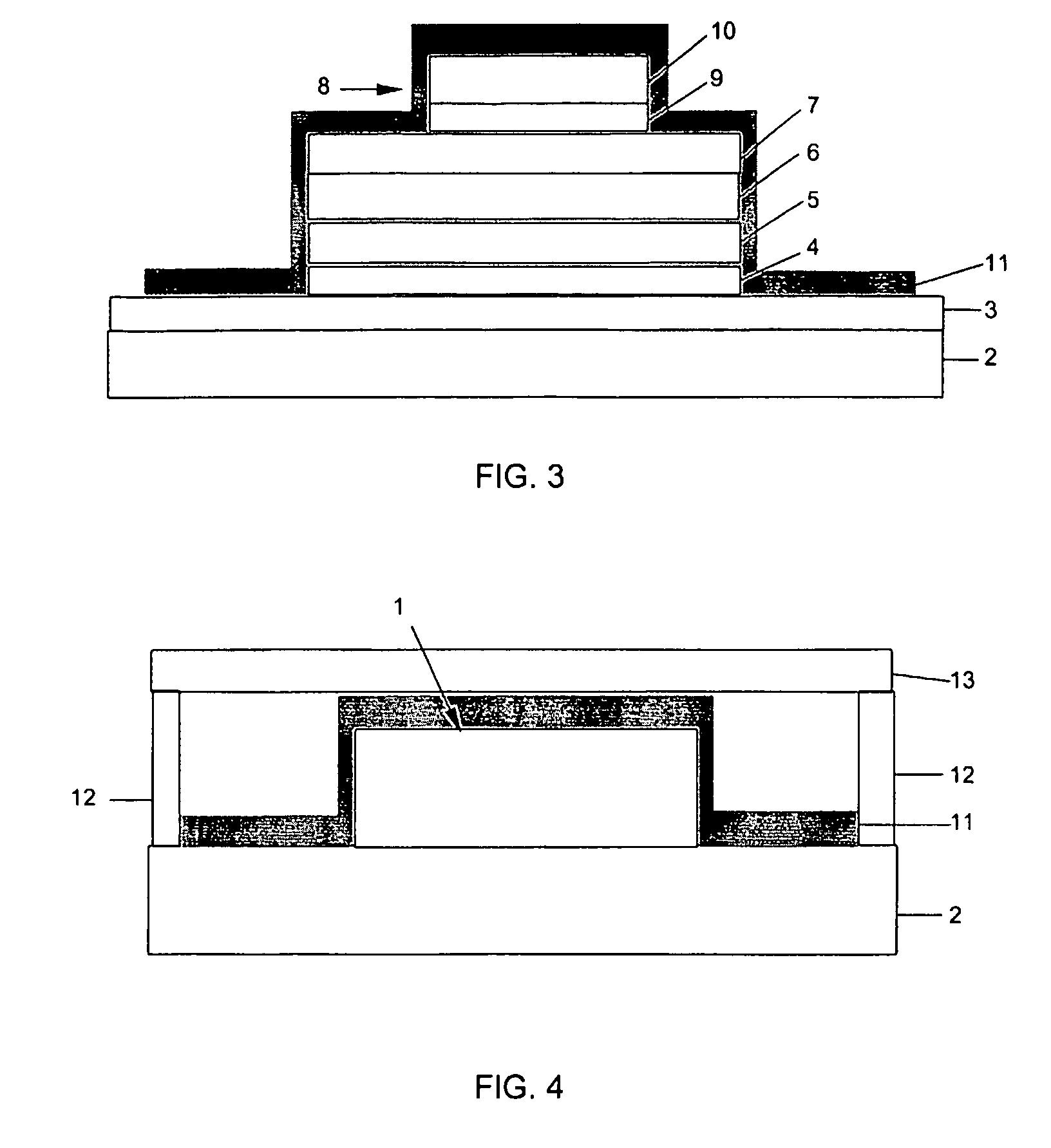Organic light emitting diode (oled)
a light-emitting diode and organic technology, applied in the direction of discharge tube/lamp details, discharge tube luminescnet screens, other domestic objects, etc., can solve the problems of reducing the electron injection efficiency of the device, cathode defects such as pinholes, and limited life of such devices
- Summary
- Abstract
- Description
- Claims
- Application Information
AI Technical Summary
Benefits of technology
Problems solved by technology
Method used
Image
Examples
Embodiment Construction
[0122] Referring to the drawings, FIG. 3 shows a schematic cross-sectional view of a first preferred embodiment of the OLED of the present invention. As seen in that Figure, the OLED 1 includes a number of layers disposed on a substrate 2. In this embodiment, the layers are arranged in the following order: an anode 3, a first oxygen / moisture barrier 4, a hole transport layer 5, and electroluminescent (EL) layer 6, a second oxygen / moisture barrier 7 and a cathode 8. In this embodiment the cathode 8 includes a calcium cathode layer 9 and a silver / aluminum cathode layer 10. All of these layers are at least partially encapsulated by an encapsulation layer 11.
[0123] The first oxygen / moisture barrier 4 is adapted to resist permeation by oxygen and moisture and is also designed to inhibit metal migration. In this preferred embodiment the barrier 4 is an organic barrier made from a polymer selected from polyimides, teflon and parylene. It is between 1 and 20 nm thick and is deposited on th...
PUM
 Login to View More
Login to View More Abstract
Description
Claims
Application Information
 Login to View More
Login to View More - R&D
- Intellectual Property
- Life Sciences
- Materials
- Tech Scout
- Unparalleled Data Quality
- Higher Quality Content
- 60% Fewer Hallucinations
Browse by: Latest US Patents, China's latest patents, Technical Efficacy Thesaurus, Application Domain, Technology Topic, Popular Technical Reports.
© 2025 PatSnap. All rights reserved.Legal|Privacy policy|Modern Slavery Act Transparency Statement|Sitemap|About US| Contact US: help@patsnap.com



